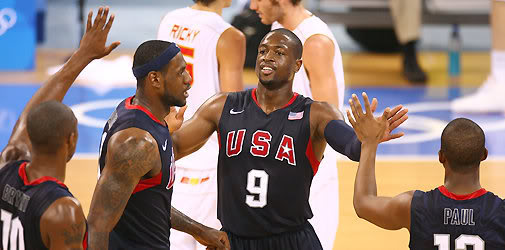 I love Player Efficiency Rating (PER) as a statistic. It’s the most complete offensive statistic we have available to us, and I think it is the best indicator of whether a player should be receiving more or less run on his particular team. The formula, however, has two shortcomings.
I love Player Efficiency Rating (PER) as a statistic. It’s the most complete offensive statistic we have available to us, and I think it is the best indicator of whether a player should be receiving more or less run on his particular team. The formula, however, has two shortcomings.
One is, admittedly by PER creator John Hollinger, that it doesn’t account for defense at all – we just don’t have the statistical tools to appropriately measure a player’s defensive contributions. There are some stats gaining momentum on the periphery (they are mostly comparison stats – comparing your opponent’s numbers overall to those when you guard them), but they are fairly raw at present. Anyway, it’s accepted that defense is a qualitative element.
The second shortcoming, though, is that looking at everything on a per-possession or per-minute basis can neglect how difficult it is to play significant minutes. This shortcoming is important for several reasons. Foremost, given equal PERs, one would assume the better defender gets additional minutes. Furthermore, it is difficult to maintain efficiency over longer periods of time – more minutes can eliminate sample size shortcomings, and the more minutes a player plays, the more likely they are to face the opposing team’s top players.
Inherently, minutes played are a measurement of a player’s (perceived) value to a team. A coach has 240 minutes to distribute between 12 players on the roster, and your share of the minutes should be reflective of how the coach values you compared to other players. Obviously there are large game-to-game fluctuations and questionable playing time patterns (Anthony Randolph, anyone?), but over an entire season or longer, minutes played should be indicative of a player’s talent level, at least compared to his teammates. A note, too, is that total minutes played (in place of minutes per game) takes into account a player’s durability, as games missed subtract from total minutes.
So with that introduction, I posit that minutes played is an underrated statistic. It has its drawbacks and doesn’t tell us much of a story alone, but in its basic form it is an excellent secondary stat to publish beside better stats like PER, True Shooting Percentage, and even per-game statistics. With that said, I thought I’d take a minute to recognize (real recognize real, after all) some of the NBA’s Iron Men of the past few seasons.
This list doesn’t tell us a whole lot, I admit. There are a lot of very good players, and a lot of very bad teams represented. Still, we learn a few things: Ray Felton and John Salmons both have high trade value right now, and this gives us another reason why; Kevin Durant and Dwyane Wade keep a high PER over a very long period of play; only two top-25 ranked PER players are in the top-15 for minutes (Durant and Wade); Oklahoma City and Memphis rely heavily on a duo (or trio) of young players, and; the Celtics do a fairly poor job of managing the minutes of the Big Three.
No, none of these things are groundbreaking. Like I said, though, minutes are an important stat for setting a frame of reference when comparing players. Would you rather have Kevin Durant’s 20.89 PER for 81.5% of your team’s minutes, or Danny Granger’s 21.15 PER for 70.8% of your team’s minutes?
If we extend the sample size to a few seasons, from 2004-05 to 2007-08, the list tells us a different story. Here, we see some trends that I would expect from my introduction – namely, the most valuable players play the most minutes.
What is noticeable immediately is that the league’s two best players, LeBron James and Kobe Bryant, are also extremely durable, making them even more valuable. We also see highly respected players like Joe Johnson, Dwight Howard, Kevin Garnett, and Jason Kidd as the Iron Men they are. The only names who stick out as being out of place are Andre Iguodala (who has quietly been very good since he entered the league and has only missed six games in this span), Andre Miller (who, coincidentally, has very high trade value every season around the trade deadline), Tayshaun Prince (see Iguodala), and Ricky Davis, who has probably benefitted from being healthy for some very bad basketball teams.
Like I said at the outset, I’m not trying to say anything remarkable here. Statistics are what they are, most of us know who the best players are, and minutes alone can be somewhat misleading. Still, ignoring minutes for a move towards efficiency stats or per-40 stats can be misleading, too. Minutes indicate value to a team, durability, and possibly even defensive abilities. It’s not an oversight that Dwyane Wade isn’t mentioned in the same breath as LeBron and Kobe despite being fairly similar in statistics and the ability to control a game – the more minutes you play, the more valuable you are.

